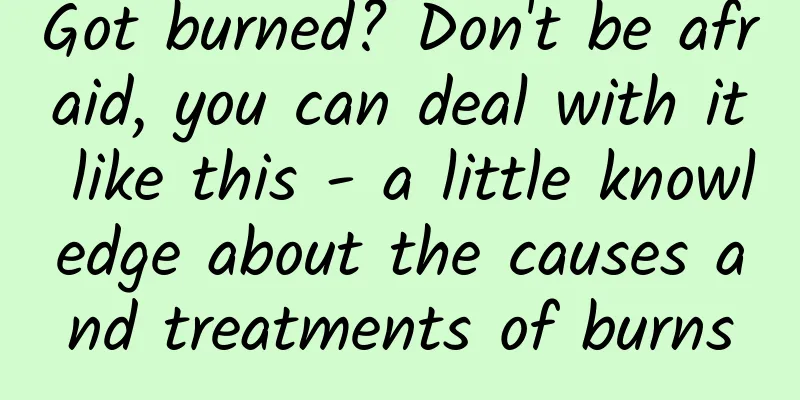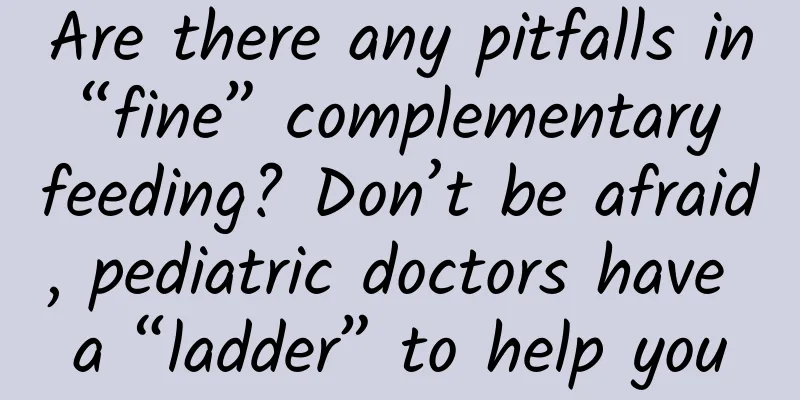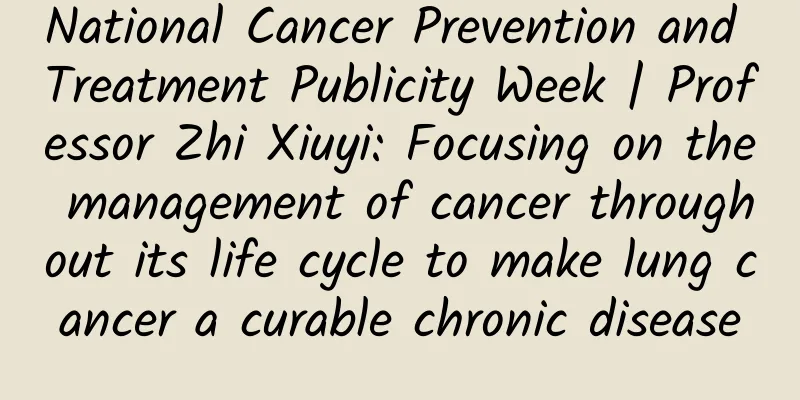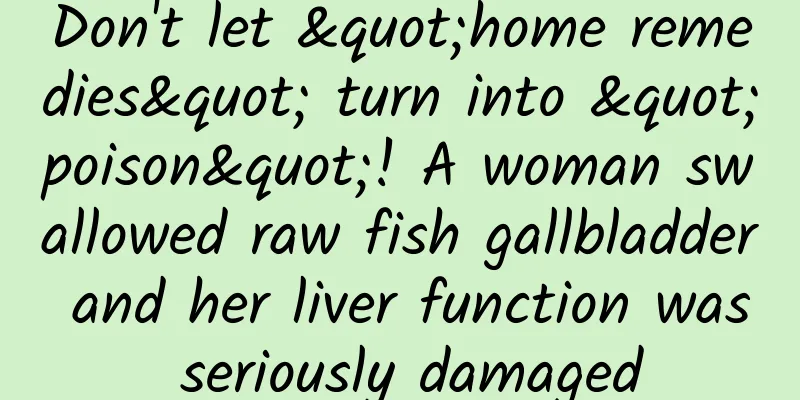Got burned? Don't be afraid, you can deal with it like this - a little knowledge about the causes and treatments of burns

|
Author: Zuo Yu, Department of Pre-hospital Emergency Medicine, The Third Xiangya Hospital, Central South University Gong Qijia Li Wenxin Ren Zixuan Mao Chengxi Xiangya School of Medicine, Central South University Reviewer: Li Xiangmin, Chief Physician of the Emergency Department, Xiangya Hospital, Central South University When pouring hot water, you suddenly feel a sharp pain on the back of your hand, and a small blister appears after a while. What should we do at this time? Don't be afraid. After learning these little tips about burns (scalds), I believe you can cope with it with ease. 1. Why is it necessary to treat burns? Burns refer to tissue damage caused by heat. In a narrow sense, burns refer to flames that burn the skin tissue, while scalds refer to skin tissue damage caused by high-temperature boiling water, hot oil, high-temperature solids, etc.; in a broad sense, burns include not only flame burns, but also high-temperature liquids, steam, high-temperature solids, electric shocks, chemical burns, etc. Scalds are a type of burn. Severe burns are often accompanied by fluid exudation, shock, infection and even cardiovascular dysfunction, leading to dysfunction of important organs; and for ordinary burns in daily life, there is also a risk of bacterial infection due to skin damage. It can be seen that the consequences of burns are not only tissue damage, but also a series of "chain events". Therefore, after a burn, reasonable treatment is imminent! The severity of burns can be classified as follows. Figure 1 Copyright image, no permission to reprint Figure 2 Copyright image, no permission to reprint 2. What are the common sources of injury in life? Hot, electric, dangerous chemicals, etc. can all cause burns. Especially for some chemicals, be sure to carefully understand the usage instructions before use to avoid accidental burns! 1. Hot: hot water, steam, oven, etc. 2. Electrically charged items: power strips, exposed wires, etc. 3. Dangerous chemicals: toilet cleaner, pipe unclogging agent, 502 glue, etc. 3. What should I do if I get burned? In general, burn treatment is a three-step process. Step 1: Get away from the heat source as quickly as possible. If a fire occurs, quickly take off the burning clothes or roll on the ground to put out the fire, and wash or soak the burned area with plenty of cold water to remove contamination and relieve pain. Step 2: Observe vital signs (consciousness, breathing, pulse, blood pressure). If there is any problem, perform cardiopulmonary resuscitation immediately and call the "120" emergency number. Step 3: Burn treatment can be summed up in five words, namely, rinse, remove, soak, cover and send. Figure 3 Copyright image, no permission to reprint It is worth noting that in step three, different levels of burns should be treated differently. First-degree burns: Apply burn oil (animal or plant preparations) evenly to the local burn area. Usually, no bandaging is required and the burn will heal in 3 to 5 days. Second degree burns: The wound surface should be cleaned and the surrounding skin should be disinfected. Usually blisters appear on the burn site. Small blisters should not be punctured during treatment, and burn oil should be applied evenly; large blisters need to be disinfected, punctured with a sterile needle, and burn oil or burn ointment should be applied, and finally bandaged, but the dressing should be changed regularly. Third-degree burns: Since the entire layer of skin, subcutaneous fat and even muscles are damaged, the skin at the wound site is necrotic and must be grafted to completely heal. Therefore, patients with third-degree burns should be sent to the hospital for treatment as soon as possible after completing basic emergency treatment to avoid shock, infection and renal failure. Specifically, different types of burns are treated in different ways. 1. Chemical burns (1) The nature of the chemical should be confirmed first: acid, alkali or phosphorus burns. For chemicals such as quicklime that react violently with water and release heat, do not rinse with water immediately. Try to remove the source of injury with clean gauze first, and then rinse with water. (2) Chemical burns on the face: Prioritize checking the eyes (especially the cornea) for damage and flushing them. (3) Acid-base neutralization may release a large amount of heat during treatment, so cold water washing should be used as the main method. 2. Electrical burns Four words: Cut off the power supply! ! Do not touch the patient before cutting off the power supply to avoid electric shock. 3. Hydrothermal burns Be sure to take off clothes soaked with hot liquid immediately and rinse them with cold water for at least half an hour. Be sure to avoid the following "minefields". 1. Apply flour, soy sauce, toothpaste, etc .: These items not only have no therapeutic effect, but also prevent the wound from dissipating heat, and affect the doctor's ability to clean the wound and judge the injury. 2. Apply ice immediately : The skin is fragile after a burn, and doing this may cause frostbite on the skin! 3. Breaking the blisters : Breaking the blisters yourself may expand the wound and cause infection. You can wait for the blisters to mature naturally or ask a doctor to puncture the blisters with a syringe. Figure 4 Copyright image, no permission to reprint IV. Other matters needing attention How to avoid burns in daily life? Remember these tips. 1. Be careful when approaching high temperature heat sources: when opening the lid of a pot, first open a crack facing a place where no one is around, and then open the lid after the heat has been released. 2. Remind others to stay away when serving tea or hot water. 3. Thermos bottles at home should be placed in a safe place so that they are not easily kicked over. 4. All heat sources should be placed out of the child’s range. 5. Do not set the temperature too high when using the heater. 6. Cigarette butts and other items should be extinguished promptly and not thrown around. I hope everyone can understand burns, prevent burns, and master scientific first aid methods for burns in life. Cherish your body, let's work together! |
Recommend
What are the early symptoms of vulvar leukoplakia
Any disease develops from the early stages. If we...
Cataract surgery should be done earlier so it is less traumatic
Cataract is a common and major cause of blindness...
Can an incomplete uterus with septate uterus give birth smoothly? Why?
Incomplete septate uterus is also a type of septa...
What should I do if my vulva is always itchy?
I believe that many women have experienced vulvar...
Can elderly patients undergo painless gastroenteroscopy? Here are the secrets to controlling risks
...
Is uterine tumor surgery dangerous?
Uterine tumor is a relatively serious disease tha...
What are the dangers of high blood sugar in pregnant women
Many women do not have high blood sugar in the ea...
How to care after uterine myoma removal
Uterine fibroids are a very serious gynecological...
Long-distance running can easily lead to sudden death? The truth is...
Rumor: "Long-distance running can lead to su...
What is the gas released by carbonated drinks? Is the gas released by carbonated drinks harmful?
Carbonated drinks have long been considered a cau...
Soaking your feet in ginger water regularly has five major benefits and effects!
Foot soaking is one of the most effective ways to...
Sudden breast pain, what's going on?
During the breastfeeding period, various situatio...
What to do if you don't have your period after taking progesterone
A woman's menstrual cycle that arrives on tim...
Pregnant again after caesarean section
Many women will pay attention to contraception af...
What is the normal hcg value at 37 days of pregnancy?
For women, pregnancy is really troublesome. It re...









